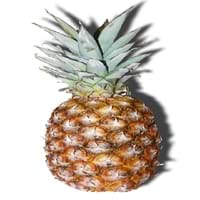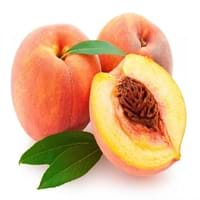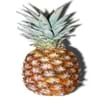Health Benefits
Asthma treatment, Bronchitis treatment, Cancer prevention, Heart care, Increases metabolic rate
Cancer prevention, Heart care, Improves eye vision, Reduces stress, Regulation of heart rate
General Benefits
Anti-inflammatory properties, Controls blood pressure, Digestive aid, Eye care, Healing of wounds, Maintains healthy cholesterol level, Strengthens bones, Treatment of sinusitis, Treatment of common cold
Anti oxidant properties, Eye care
Skin Benefits
Anti-aging benefits, Brightens and lightens complexion, Skin cleansing, Treatment of acne, Treatment of dark spots
Heals sunburn, Reduces wrinkles, Treatment of skin diseases
Hair Benefits
Prevents hair loss
Prevents hair loss
Allergy Symptoms
Abdominal pains, Itching in tongue and other parts of mouth, Sneezing, Swelling, Tingling sensation in wrist and face, Vomiting, Wheezing
Abdominal pains, Anaphylaxis, Breathing difficulty, Diarrhea, Dizziness, Hives, Itching, Lightheadedness, Nasal congestion, Nausea, Swelling of mouth, tongue or lips, Tingling sensation in mouth, Vomiting, Wheezing
Side Effects
Causes swollen mouth, Allergic reaction, Diarrhoea, Nausea, Skin rash, Vomiting
Allergic reaction
Best Time to Eat
Best if taken as a breakfast (or empty stomach), As a snack in the late afternoon, Eat the fresh ones, avoid mixing with any other foods, don't eat after meal., Morning time (before lunch)
As a snack in the late afternoon, Eat the fresh ones, avoid mixing with any other foods, don't eat after meal., Morning time (before lunch)
Vitamin B5 (Pantothenic Acid)
Vitamin C (Ascorbic Acid)
Vitamin K (Phyllochinone)
Calories in Fresh Fruit with Peel
Not Available
Calories in Fresh Fruit without Peel
Not Available
Type
Berry, Tropical
Tree fruit
Season
Autumn
Autumn, Summer
Varieties
Smooth Cayenne, Abacaxi, Red Spanish and Queen
Reliance, Sweet Scarlet, Spring Snow, Sugar May, Santa Rosa, Red Beauty, Glowhaven, Cresthaven and Redhaven Peaches
Color
Yellow
Pink, Red, White, Yellow, Yellowish-orange
Inside Color
Yellow
Yellow
Taste
Strong, Sweet, Tart
Sweet
Origin
Central America, South America
China
Grows on
Not Available
Trees
Soil Type
Clay, Sandy loam, Well-drained
Sandy loam, Well-drained
Climatic Conditions
Hot, Sunny
Cold, Warm
Facts about
- A single pineapple takes 3 years to reach maturation.
- Pineapple is not an apple, but is actually a berry.
- The name is with reference to its resemblance to pine cones.
- Pineapple is sweeter if scales are more.
- In china, peaches are considered as a symbol of good luck.
- From 1982, august is National peach month in USA.
- In roman times, Peaches were also called as Persian apples, as people assumed that they originated from Persia.
Top Producer
Costa Rica
China
Other Countries
Brazil, India, Philippines, Thailand
Greece, Italy, Spain, United States of America
Top Importer
United States of America
Germany
Top Exporter
Costa Rica
Spain
Botanical Name
Ananas comosus
Prunus persica
Synonym
Ananas sativus
Not Available
Subkingdom
Tracheobionta
Tracheobionta
Division
Magnoliophyta
Magnoliophyta
Class
Liliopsida
Magnoliopsida
Subclass
Commelinidae
Rosidae
Family
Bromeliaceae
Rosaceae
Species
A. comosus
P. persica
Generic Group
Pineapple
Rose
Difference Between Pineapple and Peach
We might think that Pineapple and Peach are similar with respect to nutritional value and health benefits. But the nutrient content of both fruits is different. Pineapple and Peach Facts such as their taste, shape, color, and size are also distinct. The difference between Pineapple and Peach is explained here.
The amount of calories in 100 gm of fresh Pineapple and Peach with peel is Not Available and 39.00 kcal and the amount of calories without peel is 50.00 kcal and Not Available respectively. Thus, Pineapple and Peach belong to Low Calorie Fruits and Low Calorie Fruits category.These fruits might or might not differ with respect to their scientific classification. The order of Pineapple and Peach is Poales and Rosales respectively. Pineapple belongs to Bromeliaceae family and Peach belongs to Rosaceae family. Pineapple belongs to Ananas genus of A. comosus species and Peach belongs to Prunus genus of P. persica species. Beings plants, both fruits belong to Plantae Kingdom.









